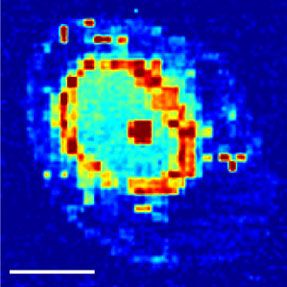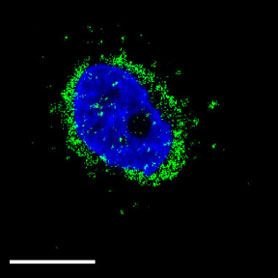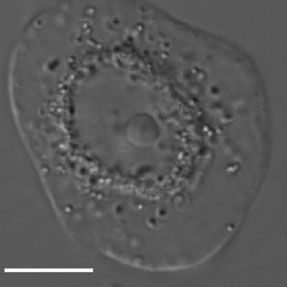Project
Overview
The ivBM-4PAP project aims at developing a fast-scan Brillouin Microscope capable of sub-millisecond acquisition time, therefore suitable for In-Vivo measurements in cells and tissues.
Liquid-liquid and liquid-solid phase transitions are nowadays considered the underlying forces guiding many biological processes including granules or aggregates formation and dissolution, chromatin organization, nucleus-cytoplasmic transport, and the formation of membrane less compartments.
Recent findings link alteration of these processes with multiple human diseases ranging from neurodegenerative disorders (e.g. Alzheimer’s disease, Parkinson’s disease) to cancer.
In-Vivo Brillouin Microscope (ivBM) will allow the assessment of the mechanical properties of these dynamical structures in a non-invasive manner in living cells, which would not only facilitate the identification of the nature of these structures, but also the direct observation of the changes in their mechanical properties and their relationship with the pathologies.
Developing a heterodyne Brillouin microscope for biomedical approaches represents a tremendous challenge but at the same time a breakthrough in the field of microscopy since the acquisition time from the today standard of 100ms/point will jump to a value three order of magnitude smaller.
Impact
By developing the ivBM, we plan to implement a gold standard instrument for biomechanical measurements, opening the way to many different clinical-oriented applications (tissues engineering, inter-cells signaling, tumor dissemination, chronic diseases, age-related diseases). Among them, within this project we aim to shed light on the mechanisms driving the onset and the progression of relevant diseases including fibrotic conditions and cancer. Indeed, the application of ivBM to the medical sector could transform our capability for an early detection of debilitating diseases whose treatment efficacy depends on a timely diagnosis.
In addition, we envision that combining ivBM measurements with the current diagnostic methodologies could permit clinicians to better define the most appropriate therapeutic strategies, thereby moving in the direction of personalized medicine using a cost-effective approach.
The success of this program will have tremendous impact on the field of mechanobiology and biophotonics, providing an innovative technology whose application will result into societal and medical benefits for the affected patients and their relatives.



Analysis of stress granule biomechanics. A Brillouin image of stress granules in a representative HeLa cell (upper panel), also identified through the associated fluorescent signal (central panel) and Differential Interference Contrast (DIC) image (bottom panel) . Scale bar, 10 μm. Commun Biol 1, 139 (2018).